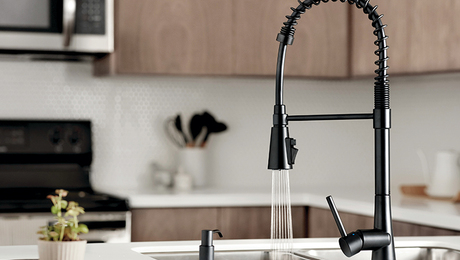Energy Savings Sash Weights with Tubes + Foam vs. Removal + Foam?
I recently read an interested study on historic windows energy improvement (link below). The study proposed keeping the window sash weights and putting them inside PVC pipes (probably OD 1-7/8″) and then filling the remaining cavity with polyurethane expanding foam. Thereby maintaining the function of the weights and improving the insulation.
In the study (pg. 33 section 3.1.2) they accidently found that 90% of air leakage improvement from retrofitting a historic double hung window is through the window weight pockets and only about 10% improvement in air leakage is through the sashes. They used densely packed fiberglass in the weight pockets, which leaks more air than polyurethane foam.
They also found (pg. 66) that the tube/weight combo with polyurethane foam improved R-value of the window by 8% in still air (from 1.29). They also showed that adding weatherstripping + an IGU ONLY to the sashes improved R-value from 1.29 to 2.09 (pg. 8). (the author clarified they did add an IGU).
However, they did not measure R-value improvement by just removing the weights and filling the pocket with polyurethane foam to compare against the 8% improvement of the weight/tube/foam combo. So my question is if the cost of sash spring balances is $120 per window what is payback time for weight removal/foam vs. weight/tube/foam. The weight box is 5″ thick and 3″ wide.
Link to referenced study:
Microsoft Word – #2008-M1-024 Final report 24JAN2011.docx (dc.gov)
GBA Detail Library
A collection of one thousand construction details organized by climate and house part









Replies
Thanks for this link. I am doing a deep energy retrofit and this is timely info that will help me make some decisions. Sorry that I do not have answers to your questions.
I was able to calculate it using a few formulas. There is an additional $1-3 in energy savings per window per year that is gained by no window weights/springs/foam over the window weights/tubes/foam option. Basically, it's NOT going to pay for the cost of the springs ($120). The formula was close to the experimental results within a few percents (8% mentioned above). I think the existing pulleys could be retrofitted with springs for a cheaper option ($30). I suspect weights make for a smoother operating window vs springs. The air sealing of the foam is the most important part. A window that has had weight pockets foamed and nothing else saves $8.56-11.69 per year between air leakage and conduction. Probably more in really drafty houses.
The real money savings is adding a one piece thick IGU storm window + weight pocket foam That saves $20 per year.
author confirmed an IGU was added to the retrofitted double hung.